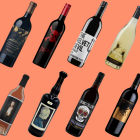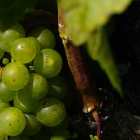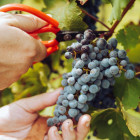What is smoke taint and how big a problem is it for winemakers?
Smoke taint in wine – the result of wildfires in proximity to vineyards – doesn’t compare to the immediate danger that wildfires pose to lives, homes and businesses, but it has the potential to cause big problems in the winemaking process. And as wildfires become increasingly frequent in wine regions around the world – in particular California, Australia, Spain, Chile, Oregon and Washington – smoke taint is becoming an increasing talking point among winemakers.
What is smoke taint?
Smoke taint occurs when the grapes in a vineyard are exposed to smoke from nearby wildfires. It’s not simply a case of residue sitting on the grape. As much as a quarter of wood consists of a compound called lignin, a structural component that provides its strength and rigidity. When lignin burns, it creates airborne compounds, referred to as volatile phenols, that can be absorbed by grapes and which then bind to molecules and sugars in the grape in a process known as glycosylation.
It’s extremely difficult to determine whether a grape has been affected, as this process renders the phenols no longer volatile, meaning their smokiness cannot be detected by smell or taste. Problems occur during the winemaking process and later in the cellar, as once the grapes are fermented, the acidity in the resulting wine will begin to break the bonds between the sugars and the phenols, rendering them volatile once again, and therefore detectable.
The result is not the typical smoky characteristics associated with wines aged in wooden or toasted barrels, but rather wines with unpleasant aromas of plastic, chemicals, wet cigar and used ashtray. Additionally, the enzymes in your mouth are able to break down any glycosides that remain, and the undesirable aromas can be vaporized as you taste, so a wine might smell fine but taste off.
Is smoke taint harmful to health?
There’s no evidence that smoke taint is harmful to the health of drinkers – not that you’d want to drink smoke tainted wine anyway – but it does of course pose serious air quality risks to vineyard workers.
Will vineyards in proximity to wildfires always be affected by smoke taint?
Despite the increasing frequency of wildfires around the world, smoke taint is still considered relatively rare and does not automatically affect wineries and vineyards near a fire. There are a number of factors at play, including:
- Proximity to the fire (is it fresh smoke or lingering smoke)
- Duration of exposure
- Ripening stage of the grapes
- Grape variety
Smoke’s visual presence and local air quality indices are not always reliable indicators of the impact on grapes. Take Washington’s 2018 vintage, for example. Wildfire smoke filled the air for weeks during the vineyards’ most vulnerable growing phase and the resulting wine showed little impact. In fact, many regard the vintage as one of the state’s best in recent times.
What makes some grapes more susceptible to smoke taint?
Research suggests that grapes are most vulnerable to smoke damage in the first seven days following veraison when the grapes begin ripening and changing their colour (learn more about the lifecycle of a grapevine here). However, the risk can remain right up until harvest.
You’re also much less likely to see smoke taint in white wines, compared to reds. This is because the offending compounds are concentrated in the grape skin, and whites don’t typically sit on their skins during fermentation like reds do.
There is also some debate over the differences in varieties. There’s no solid research on the matter yet, but anecdotally many winemakers claim that thicker-skinned varieties tend to fare better in the presence of smoke, so Sangiovese would be more vulnerable than Cabernet Sauvignon, for example.
How do winemakers test for smoke taint?
Determining whether grapes have been affected by smoke taint isn’t a matter of just tasting them. Instead, grapes need to be analysed by commercial laboratories that examine between two and 13 markers that indicate potential smoke exposure, such as volatile and sugar-bound compounds.
The main problem here is that smoke involves thousands of compounds, so these indicators might not paint the full picture. All the labs can do is make an assessment on based on how they anticipate the wine developing, which is a challenge.
Additionally, there’s not always enough provision for this analysis come wildfire season. Testing capacity was overrun in Australia last year, for example, which meant many producers were unable to get the timely results they needed to decide whether to proceed with the vintage, or abandon it altogether.
What can be done to mitigate smoke taint?
There are a couple of measures winemakers can take to help avoid the consequences of smoke taint. Firstly – a practice that is universally recommended – minimise contact with the grape skins, as that’s where the compounds are concentrated. Other steps include adding fining agents such as activated carbon or using reverse osmosis or solid-phase extraction techniques to reduce the volatile phenols.
Other producers might choose to maximise other flavours in a bid to mask the unpleasant smoke taste, or even blend their wine with an unaffected supply to dilute the taint, although this risks ruining all of it. However, none of these methods are perfect, and taint that appears to have been eradicated can sometimes resurface.
As such, producers that aren’t willing to risk their reputation may end up bottling their affected wine as a separate label, or selling the juice to a bulk supplier. In every scenario, though, producers face added expense, stress and frustration.
What is science and technology doing for smoke taint?
Smoke taint is a pressing issue for the wine industry, especially as the threat of climate change makes wildfires increasingly frequent and severe. Researchers in the field are continually looking at ways to counteract smoke taint in wine more simply, affordably and efficiently, but undoing the complex chemical processes that take place is no small undertaking. Until a breakthrough remedy is found, wine producers in wildfire-affected regions will, sadly, have to accept that smoke taint is going to become an increasing risk in their operations.






